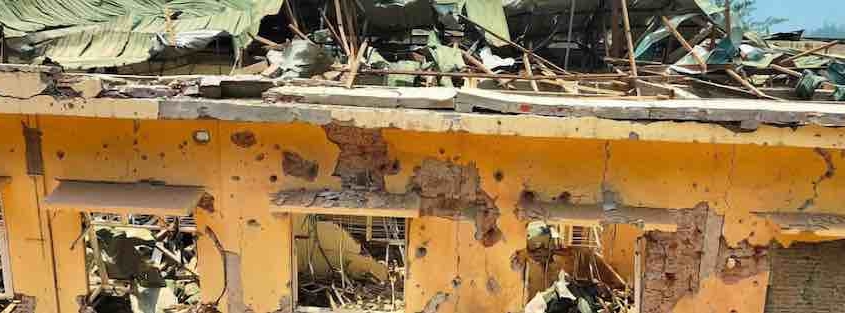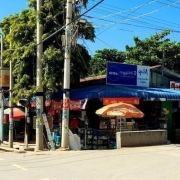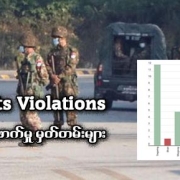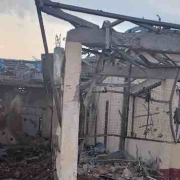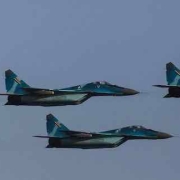‘Apocalypse’: Myanmar Doctor Describes Deadly Junta Airstrike on Mindat Hospital
“Apocalypse” is how a doctor has described the scene when Myanmar junta fighter jets used four 500lb bombs to destroy a hospital in Chin State’s Mindat Township on April 25, killing five patients and injuring 15 others.
Dr. Shao* was among anti-regime medics who helped run Wun Ma Thuu Hospital, which provided free treatment to civilians injured in junta attacks.
Residents of Mindat and neighboring Chin State townships, as well as nearby areas of Magwe and Sagaing regions, relied on the hospital before it was targeted by the junta.
Fighter jets intentionally bombed the hospital despite an absence of clashes in the township. Three days after the first airstrike, warplanes returned to bomb the hospital’s remaining buildings on April 28.
Intentionally attacking medical services during conflict is considered a war crime under international humanitarian law. A total of 343 hospitals and clinics have been destroyed in junta attacks, killing 104 health workers, according to an April 28 statement issued by the parallel civilian National Unity Government.
Dr. Shao formerly worked at Mandalay Public Hospital in the country’s second city but joined the CDM (civil disobedience movement) two days after the military ousted the elected civilian government on Feb. 1, 2021. Fleeing an arrest warrant issued because he refused to work for the junta, he took up his post at Wun Ma Thuu Hospital on Aug. 6, 2021.
On April 25, he was settling down after a routine day in the operating theater.
“That day, 25.04.2024, started like any other day. We performed surgery on a patient at 4.30 pm and finished the operation around 6 pm. After the surgery, my colleague and I walked back to our place which was a block away from the hospital down the hill. I was supposed to attend an online class, but I didn’t. I cooked our traditional fish-based rice noodle soup for tomorrow’s breakfast for all of us. Then I went to my room and watched a YouTube video to be relaxed.”
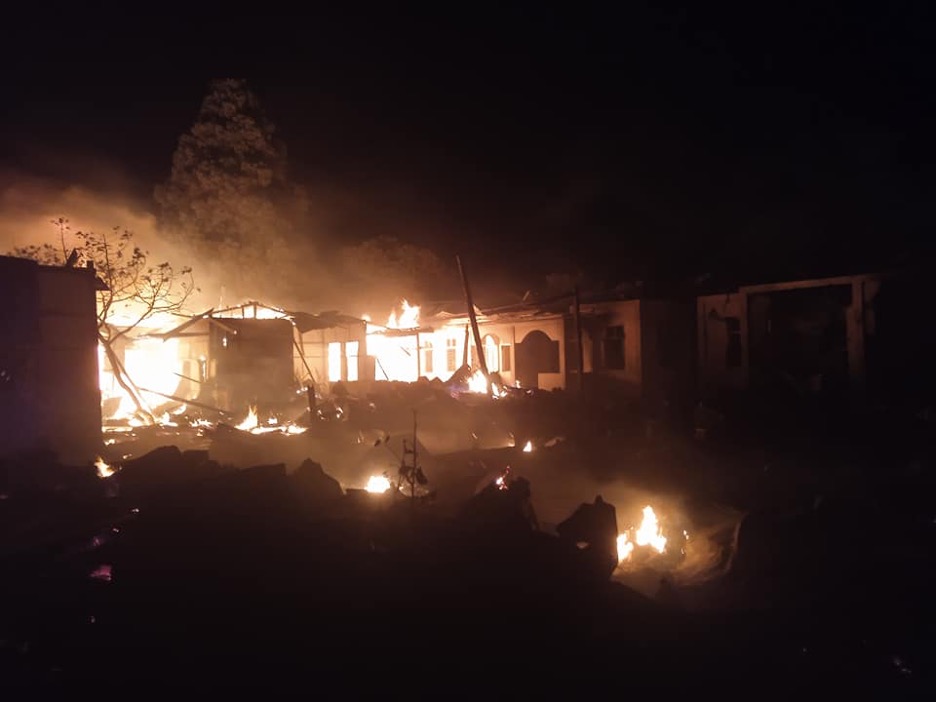
He describes what happened next as “version two of the apocalypse”.
“I was chatting with my colleagues at about 7.50 pm when I heard a noise that I suddenly realized came from a jet fighter or a helicopter. Before I could warn my friends that we might be under air attack, a loud blast and red flash knocked me to the floor and the ceiling began to cave in. It was an airstrike for sure and my impulse was to run to the bomb shelter.”
However, he remembered that the military often strafes people with machine-gun fire after an airstrike.
“So I continued to crouch down in the room. As expected, I heard the sound of a machine gun being fired.
“After about a minute, I ran to the bomb shelter and yelled for everyone to get in. Two minutes after I got inside, the second bomb detonated. This time it was closer, shaking the ground so that the edges of the bomb shelter started to fall. We later found out that the blasts were so intense because they came from two bombs being dropped twice.”
The impact also caused oil barrels to explode, which started a fire.
“I was in a frenzy and I didn’t know what to do. Our house was on fire and we couldn’t retrieve any belongings from the blaze.”
Once the bombing raid was over, Dr. Shao and his colleagues rushed out to check the damage.
“We went to the hospital and found everything destroyed: the ceiling had collapsed, the floors were strewn with broken glass, and the building was on fire. We salvaged what we could from the operating theater, including instruments, medicines, and other stuff that was still in good condition. We tried to carry out as much stuff we could, but the fire became so strong that we had to give up at around 11.30 pm.”
Hospital staff also raced to save bedridden patients from the flames and smoke that were engulfing the wards.
“We wrapped immobile patients in soaking blankets and carried them out of the burning hospital.
My friend, nurses and I checked the patients to see who needed urgent medical attention.
The stable patients were then sent to houses in the village. We also transformed a village house into a makeshift hospital and temporary operating theater.”
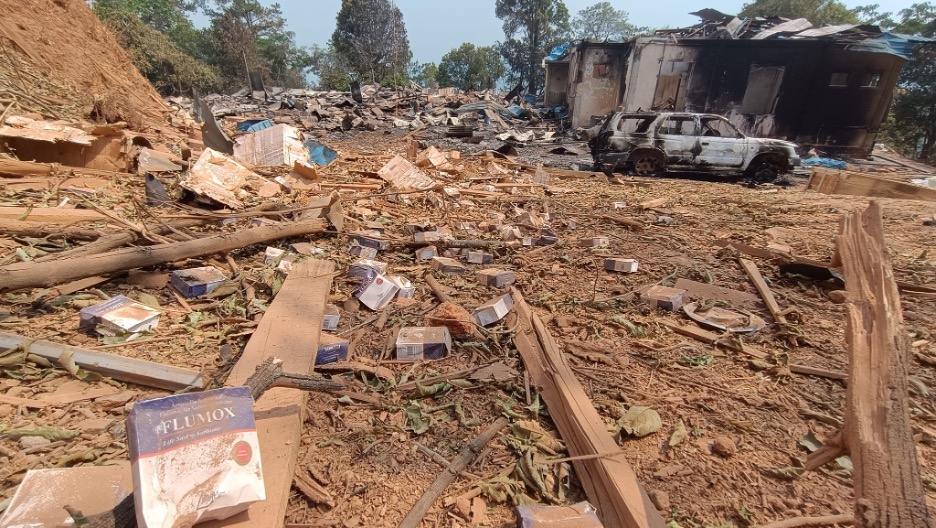
Two patients were killed immediately in the bombing while another three succumbed to their injuries in the following days. Over 30 more were injured, 14 when the hospital ceiling collapsed from the blast impact.
“I was simultaneously furious and grief-stricken that patients who had come to be treated for their injuries had suffered worse injuries and even death here due to the inhumane action of intentionally dropping bombs on the hospital.”
Having rescued patients and equipment from the burning hospital, Dr, Shao and his team now had another urgent task at hand: saving the lives of people caught in the bombing.
“At 5.30 am, we needed to operate on a patient who had a stick penetrating his abdomen at the civilian house in the village. We had to arrange a row of chairs to form a makeshift operating table.”
An hour later, exhausted after completing the operation successfully, he was lying down for a nap when the warning of another air raid sounded. He rushed to the bomb shelter but only managed to get an hour’s rest due to the crowded conditions.
“Throughout the whole day, we were in and out of the bomb shelter due to a jet fighter and military airplane hovering above our heads.”
After undergoing surgery in the makeshift hospital, patients were sent back to houses in the village.
The next day, patients who could be moved were evacuated to neighboring villages over concern of more bombing raids.
“I didn’t have time to cry because I was shaking with fear,” Dr. Shao said. “That’s why I describe what I experienced on that day as a second apocalypse.”
Dr. Shao is a pseudonym used at the request of the doctor concerned for his security.

